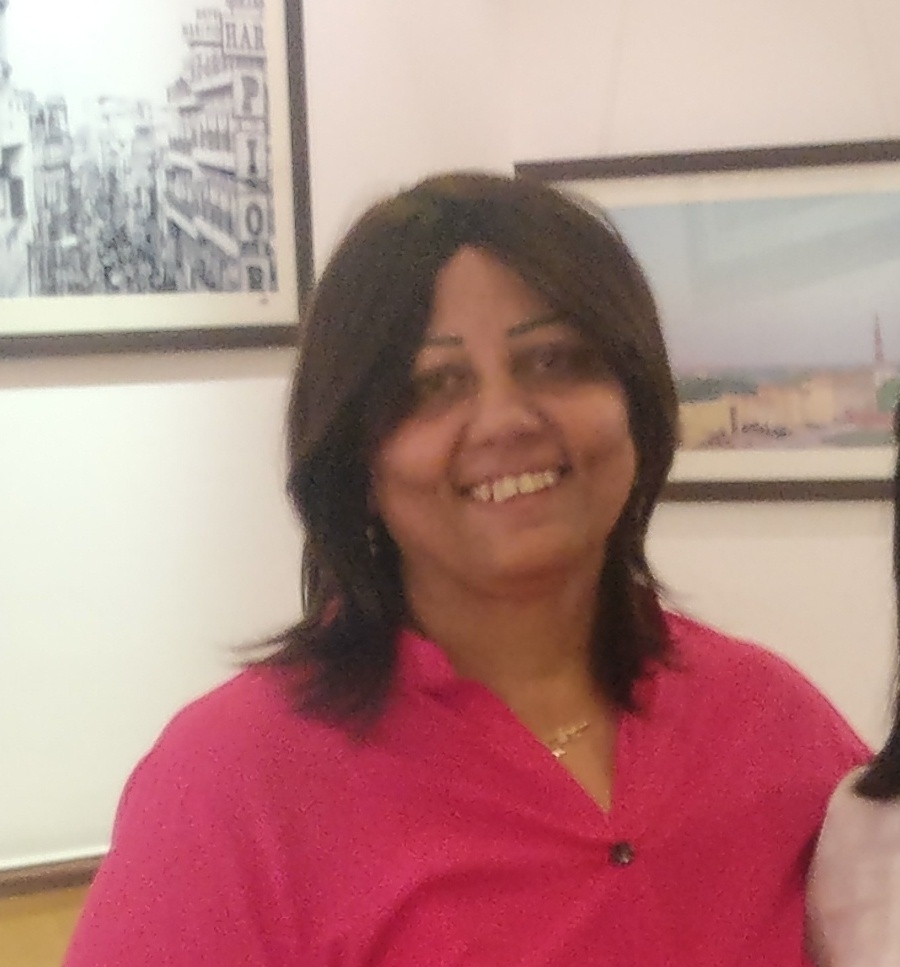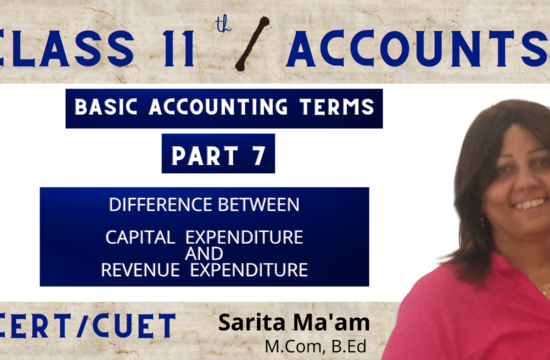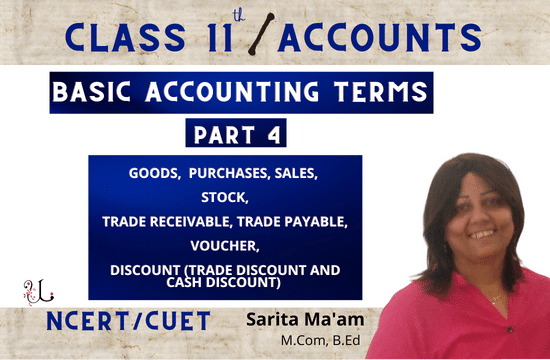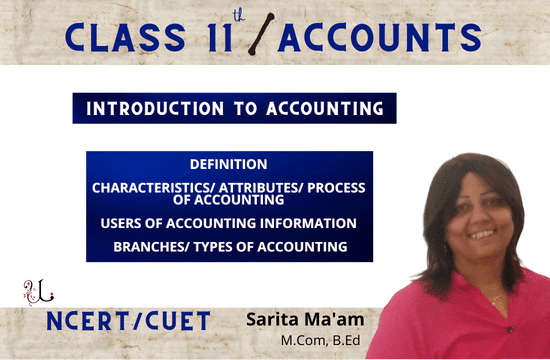Q1. Mr. Prem commenced business of trading in electronic goods with an initial capital of ₹ 15,00,000. Out of the said ₹15,00,000, he paid ₹10,00,000 towards purchase of electronic goods. He further spent ₹2,00,000 on furnishing the shop and ₹35,000 for purchase of computer and printer ₹10,000 is yet to be paid to supplier of computer.
He decided to trade in home appliances also and further invested ₹5,00,000.
He purchased electronic goods and home appliances for ₹8,00,000 out of which purchases of ₹2,00,000 were on credit.
He sold goods costing ₹5,00,000 for ₹7,00,000 in cash and goods costing ₹2,50,000 for ₹3,10,000 on credit. Goods sold on credit for ₹25,000 were returned being defective. These goods (costing ₹20,000) were returned to the supplier.
Due to an earthquake, 2 LCD Televisions costing ₹50,000 were completely destroyed. Mr. Prem received an insurance claim of ₹ 30,000.
A customer purchased goods costing ₹2,25,000 for ₹ 3,00,000 and was allowed discount of ₹15,000. He was further allowed discount of ₹5,000 for payment within agreed time. He paid salary to Shyam of ₹55,000; ₹5,000 were yet to be paid. He insured the goods and paid insurance premium of ₹12,000. Out of this, ₹7,000 are for the next year. Mr. Prem withdrew ₹30,000 during the year for his personal use.
You are required to answer the following questions on the basis of the above:
You are required to answer the following questions on the basis of the above:
(1) What is the amount of capital invested in the business by Prem?
Sol
(1) Capital invested by Prem in the business is ₹20,00,000 (i.e., ₹15,00,000 + ₹5,00,000).
(2) What is the amount of Drawings?
sol
(2) The amount of Drawings is ₹30,000.
(3) What is the amount invested by Prem in fixed assets?
Sol
(3) Prem has invested ₹2,35,000, i.e., ₹2,00,000 (Furnishing) + ₹35,000 (Computer and Printer) in the fixed assets. ₹10,000 is yet to be paid to supplier of computer
(4) What is the amount of cash purchases?
Sol
(4) Cash Purchases made are ₹16,00,000 (i.e., ₹ 10,00,000 + ₹8,00,000 – ₹2,00,000) during the year
(5) What is the amount of credit purchases?
Sol ₹2,00,000 (₹8,00,000 out of which purchases of ₹2,00,000 were on credit.)
(6) What is the amount of total purchases?
Sol
(6) Purchases made by Prem are ₹18,00,000 (i.e., ₹ 10,00,000 + ₹8,00,000) during the year
(7) What is the amount of Purchases Return?
Sol
(7) The amount of Purchases Return is ₹20,000.
(8) What is the value of net purchases?
Sol
Net purchases = Cash purchase + Credit purchase – purchase Return
(8) The amount of net purchases is ₹17,80,000 [₹10,00,000 + ₹ 8,00,000 –₹ 20,000 (Return)].
(9) What is the amount due to creditors?
Sol
(9) Amount due to creditors is ₹1,80,000. [(₹ 2,00,000 – ₹ 20,000) (Purchases Return)]
(10) Has Mr. Prem received any Cash Discount? If yes, what is the amount?
sol
No. Nil
(11) What is the amount of Trade Discount allowed?
Sol
(11) The amount of Trade Discount allowed is ₹15,000
(12) Has Mr. Prem allowed Cash Discount? If yes, what is the amount?
sol
(12) Yes, Prem has allowed cash discount and the amount is ₹5,000
(13) What is the value of Closing Stock?
sol
(x) The value of Closing Stock is 7,75,000.
₹10, 00,000 – ₹5, 00,000 – (₹ 2, 50,000 – ₹20,000) – ₹20,000 + ₹ 8, 00,000– ₹50,000 –₹ 2, 25,000 =
₹7, 75,000].
(14) What is the amount of Cost of goods sold?
Sol
Cost of goods sold = Opening stock + net purchases (cash purchases + credit purchases – purchases return) – Closing Stock
Cost of goods sold = 0(Opening stock) + ₹17,80,000 (Net Purchase) — ₹7,75,000 (Closing Stock) =10,05,000
(15) What is the amount of expenses?
Sol
[Expenses: ₹10,05,000 (Cost of goods sold)+ ₹20,000 (Loss of Stock 50,000-30,000) + ₹5,000 (Discount) + 60,000 (Salary) + 5,000 (Insurance Premium) = ₹10,95,000]
(16) What is the amount of Sales Return?
Sol
(16) The amount of Sales Return is 25,000.
(17) What is the amount due from debtors?
Sol
(17) Amount due from debtors is ₹2,85,000. (₹3,10,000 – ₹25,000)
(18) What is the amount of sales (Revenue from operations)?
Sol
(18)[Sales: ₹7,00,000 + ₹3,10,000 + ₹2,85,000 — ₹25,000 (Return)].= ₹ 12,70,000 (Net Sales)
(19) What is the amount of any gain earned by Mr. Prem?
Sol
(19) Nil
20. What is the amount of Total Revenue?
Sol
Total Revenue = Revenue from operations + Gain
Revenue = 12,70,000 (Net Sales) + 0 = 12,70,000 (Net Sales)
(21) How much profit is earned by Prem?
Sol
(21) Profit = Total Revenue – Total Expenses
Profit earned by Prem is 1,75,000 [₹12,70,000 (Net Sales) — ₹10,95,000 (Expenses)]
(22) What is the income earned by Prem?
Sol
(22) Profit = income
₹1,75,000. Profit earned by Prem is ₹1,75,000 as he has no income from non-operating activities.
(23) What is the amount of long-term liabilities?
Sol
(23) Long-term liabilities of Prem are nil.
(24) What is the amount of current liabilities?
Sol
(24) Current liabilities of Prem are ₹1,95,000 ( ₹ 10,000 (Computer and Printer) + (₹2,00,000 (Purchases) – ₹20,000 (Purchases Return)) + ₹5,000 (Salaries) ].
(25) What is the amount of prepaid expenses?
Sol
(25) Amount of prepaid expenses is ₹7,000 being insurance premium.
(26) What is the amount of outstanding expenses?
Sol
(26) Outstanding expenses are ₹5,000 being salary payable.
Q2. Nikunj and Nitin started with Cash ₹ 1,20,000 and Machinery ₹ 3,00,000. They decided to set up a production line for PPE kits for the protection from Covid 19 virus. As their demand expanded, they decided to purchase one more machinery. For the same, they took bank overdraft and purchased the machinery. The quality of the company’s product was very high and therefore, it could develop a reputation for itself in the market and business was flourishing. After 1.5 years, their old machinery turned obsolete so they decided to sell the same. They sold it and got some cash proceeds. To further increase the brand presence among the concerned stakeholders, they decided to run advertisements from the cash proceeds of machinery sold. As more and more customers demanded their product, they decided to launch a discount for bulk purchases. The discount was not to be recorded in the books of accounts. This campaign was successful and they earned lot of profits from the same.
Q1. Which type of discount is being discussed in the last part of passage?
(a) Trade discount (b) Cash discount (c) Both (a) and (b) (d) Can’t be determine
Ans.
(a) Trade discount
Q 2. Which asset is discussed in the line, “The quality of the company’s product was very high and therefore, it could develop a reputation for itself in the market and business was flourishing”?
(a) Tangible (b) Intangible (c) Current (d) Both (a) and (c)
Ans.
Goodwill (Intangible)
Q3. Which type of liability is discussed in the passage?
(a) Non-current (b) Current (c) Both (a) and (b) (d) Can’t be determined
Ans.
Current liability
they decided to purchase one more machinery. For the same, they took bank overdraft and purchased the machinery
Question 4. What was the capital initially invested?
(a) ₹ 2,80,000 (b) ₹ 3,00,000 (c) ₹ 4,20,000 (d) Can’t be determined
Question 5. The passage involves capital receipts (apart from initial capital invested).
(a) True (b) False (c) Partially true (d) Can’t say
T. S. GREWAL’S
Q3. Mr. Gopal started business for buying and selling of readymade garments with ₹8,00,000 as an initial investment. Out of this he paid ₹4,00,000 for the purchase of garments and ₹50,000 for furniture and ₹50,000 for computers and the remaining amount was deposited into the bank. He sold some of the ladies and kids garments for ₹3,00,000 for cash and some garments for ₹1,50,000 on credit to Mr. Rajesh.
Subsequently, he bought men’s garments of ₹2,00,000 from Mr. Satish. In the first week of the next month, a fire broke out in his office and stock of garments worth ₹1,00,000 was destroyed. Later on, some garments which cost ₹ 1,20,000 were sold for ₹1,30,000. Expenses paid during the same period were ₹15,000. Mr. Gopal withdrew ₹20,000 from business for his domestic use.
From the above, answer the following:
(i) What is the amount of capital with which Mr. Gopal started the business?
(ii) What fixed assets did he buy?
(iii) What is the value of the goods purchased?
(iv) Who is the creditor and state the amount payable to him?
(v) Who is the debtor and what is the amount receivable from him?
(vi) What is the total amount of expenses?
(vii) What is the amount of drawings of Mr. Gopal?
SOL
Q(i) What is the amount of capital with which Mr. Gopal started the business?
ANS.
(i) ₹8,00,000;
Mr. Gopal started business for buying and selling of readymade garments with ₹8,00,000 as an initial investment.
Q (ii) What fixed assets did he buy?
ANS.
(ii) ₹ 1,00,000 (Furniture ₹50,000 + Computer ₹50,000)
₹50,000 for furniture and ₹50,000 for computers
Q(iii) What is the value of the goods purchased?
ANS.
(iii) ₹4,00,000 + ₹2,00,000 = ₹6,00,000;
₹4,00,000 for the purchase of garments and
Subsequently, he bought men’s garments of ₹2,00,000 from Mr. Satish.
Q(iv) Who is the creditor and state the amount payable to him?
ANS.
(iv) Mr. Satish—₹2,00,000;
he bought men’s garments of ₹2,00,000 from Mr. Satish.
(v) Who is the debtor and what is the amount receivable from him?
ANS.
(v) Mr. Rajesh—₹1,50,000;
some garments for ₹1,50,000 on credit to Mr. Rajesh.
Q (vi) What is the total amount of expenses?
ANS.
(vi) ₹7,15,000;
Cost of goods sold = Opening stock (0) + {net purchases (6,00,000) (cash purchases (4,00,000) + credit purchases (2,00,000) – purchases return (0) } – Closing Stock (0)
{cost of all selling items not given so we assumed that all the stock has been sold}
= 6,00,000
[Expenses: ₹6,00,000 (Cost of goods sold) + ₹1,00,000 (Loss of Stock by fire) + ₹15,000 (other expenses)
= ₹7,15,000]
Q(vii) What is the amount of drawings of Mr. Gopal?
ANS (vii) ₹20,000.
Mr. Gopal withdrew ₹20,000 from business for his domestic use

Sarita Chugh M.Com, B.Edan is Accounts and Economics teacher having more than 30+ years of experience. She is Edupreneur and founded Unique Learning Academy in 2004. She believes that every child has the right to affordable education.










